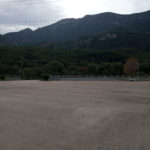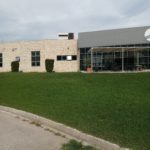The Battle of Thermopylae is one of the most well-known battles in history, where the 300 Spartans fought valiantly against the massive Persian army. While the battle itself was a Greek defeat, it was the aftermath that ultimately solidified the legacy of Thermopylae. The events that ensued would forever alter the course of Greek and Persian history.
Key Takeaways:
- The Battle of Thermopylae was a significant event in ancient history.
- The aftermath of Thermopylae had far-reaching implications for both Greece and Persia.
- The events that followed Thermopylae changed the course of military strategy and warfare.
- What happened after Thermopylae contributed to the lasting legacy and cultural impact of the battle.
- The legacy of Thermopylae is still celebrated and remembered in modern times.
The Persian Perspective: Xerxes’ Next Moves
After the Battle of Thermopylae, the Persian army faced a critical decision. Xerxes had lost a significant amount of troops, and the Greeks had proven to be a formidable opponent. To counter the Greek alliance, Xerxes adapted his strategies to suit the changing circumstances.
Xerxes ordered his navy to sail around the Greek peninsula and meet the Persian army in Attica. The Persian army then proceeded to sack Athens, an action that was meant to break the morale of the Greek alliance. In the meantime, the Persian navy engaged in a major battle with the Greek fleet at Artemisium, which ended in a stalemate.
Undeterred, Xerxes continued his advance, and the Persian army marched towards the Isthmus of Corinth, intent on conquering the rest of Greece. However, the Greeks remained resolute and determined to defend their land.
Table: Persian and Greek Forces
| Forces | Persian | Greek |
|---|---|---|
| Infantry | 250,000 | 50,000 |
| Cavalry | 10,000 | 7,000 |
| Navy | 700-800 ships | 300-400 ships |
The Persian army’s advanced numbers and greater resources provided them with an advantage, but the Greek alliance’s superior strategy and tactics offered them a fighting chance.
Quote: “In war, the outcome is never determined by numbers alone.” – Sun Tzu
The Persian Perspective: Xerxes’ Next Moves
Xerxes had learned from his previous mistakes and understood that he had to change his strategy to overcome the Greek alliance. Instead of relying solely on brute force, Xerxes utilized his navy, forcing the Greek forces to split their attention.
However, despite initial successes, the Persians were ultimately defeated by the Greeks, thanks to the latter’s superior naval tactics and the strategic leadership of key figures like Themistocles and Aristides.
The Battle of Salamis, won by the Greeks in a decisive naval victory, shifted the balance of power back in favor of the Greek alliance. The Greeks then launched a counteroffensive, leading to the Battles of Plataea and Mycale, which ultimately resulted in a Greek victory.
In conclusion, Xerxes’ next moves after the Battle of Thermopylae were pivotal in determining the course of the Greco-Persian Wars. His decision to adapt his strategies and employ his navy proved to be effective in the short term, but the superior strategy and tactics of the Greek alliance ultimately led to their victory.
The Greek Alliance: Reinforcements and Defense
Following the Battle of Thermopylae, the Greek city-states realized the significance of the Persian threat and the need for a united front. Led by Sparta, the Greek alliance quickly mobilized and implemented a series of measures to strengthen their defenses and prepare for the looming invasion.
The first step taken by the Greeks was to reinforce their army with additional troops. Athens, which had previously been at odds with Sparta, pledged ships and men to aid the Spartan-led alliance. Thebes, Corinth, and other Greek city-states also contributed to the effort, sending contingents of soldiers to bolster the ranks.
However, the Greek alliance faced significant challenges in coordinating their forces and establishing a unified chain of command. The Greeks, with their fiercely independent city-states, lacked a centralized authority or a clear military leader to guide them. As a result, the alliance was often plagued by disagreements and competing agendas.
The Battle of Marathon and Miltiades’ Legacy
Despite these challenges, the Greeks managed to achieve a significant victory over the Persians at the Battle of Marathon in 490 BCE. The Greeks, led by the Athenian general Miltiades, employed a bold and unconventional strategy that caught the Persians off guard. The victory at Marathon boosted Greek morale and served as a testament to the effectiveness of their alliance.
Miltiades’ success at Marathon cemented his legacy as one of the greatest military minds in Greek history. His innovative tactics and leadership skills inspired future generations of Greek commanders and set the standard for strategic thinking in warfare.
However, the Greeks still faced the daunting task of defending their homeland against the full might of the Persian Empire. With the Persians amassing their forces for a second invasion, the Greek alliance continued to prepare their defenses and strategize for the coming conflict.
The Naval Battle of Artemisium: The Clash of Sea Powers
Following the defeat at Thermopylae, the Greeks knew that the Persian invasion would turn to the sea. The Battle of Artemisium, fought simultaneously with the more famous Battle of Thermopylae, saw the Greek fleet under the command of Themistocles engaged in fierce naval combat against the Persian navy led by Artemisia I of Caria.
The Greek fleet consisted of 271 triremes, a type of ancient warship propelled by oars, while the Persian forces had around 1200 vessels.
| Greek Forces | Persian Forces |
|---|---|
| 271 triremes | around 1200 vessels |
Despite being significantly outnumbered, the Greek navy managed to hold its ground and inflict heavy losses on the Persian fleet. The Greek strategy was to use their superior seamanship to ram and sink Persian ships, rather than engage in boarding actions.
“Ten of their ships surrounded a single one of ours and took it; and elsewhere in the battle the Persian ships did great damage to one another by crashing into each other, since they were in confusion…” – Herodotus, The Histories, 8.16
The battle lasted for three days, with both sides suffering significant losses. However, the Greeks were ultimately forced to withdraw, as news arrived of the fall of Thermopylae and the likelihood of being outflanked by the Persians.
While the Battle of Artemisium did not result in a clear winner, it was a significant moment in the Greco-Persian Wars, as it demonstrated the strength of the Greek navy and their ability to hold their own against a much larger opponent.
The Role of Artemisia I of Caria
Artemisia I of Caria was one of the commanders of the Persian navy during the Battle of Artemisium. According to ancient sources, she was an exceptional naval commander and was highly regarded by Xerxes himself.
During the battle, Artemisia’s ship was pursued by a Greek vessel, and in an attempt to evade capture, she rammed and sank one of her own Persian ships, fooling the Greeks into thinking she was one of their own. This act of deception earned her the admiration of Xerxes but also caused dismay among other Persian commanders.
The Importance of Naval Warfare in the Greco-Persian Wars
The Battle of Artemisium highlighted the importance of naval warfare in the struggle between Greece and Persia. With the Greek victory at Salamis, naval power became a decisive factor in determining the outcome of the Greco-Persian Wars.
As a result, both sides invested heavily in naval technology and strategy, leading to the development of new tactics and innovations such as the corvus, a boarding bridge used by the Romans against Carthage in the First Punic War.
The legacy of the Battle of Artemisium and the other naval engagements of the Greco-Persian Wars can still be seen today in the tactics and technology of modern naval warfare.
The Fall of Athens: The Persians’ Advance
After the Battle of Thermopylae, Athens was left vulnerable to a Persian invasion. In retaliation for the Greek victory at Thermopylae, the Persian army advanced towards Athens, burning and pillaging every town and city in their path.
The Athenians, aware of the imminent threat, evacuated the city, leaving their homes and possessions behind. The small Greek army that remained in Athens was unable to stand up to the Persian forces, and the city quickly fell.
“The fall of Athens was a significant blow to Greek morale. The Persians had demonstrated their military prowess, and many Greeks feared that their city-states would be next.” – Ancient Greek historian Herodotus
| Date | Event |
|---|---|
| 480 BCE | Persian Forces led by Xerxes advance towards Athens after the Battle of Thermopylae. |
| Athens is evacuated, and the city falls to the Persians. |
Despite this loss, the Athenians were able to regroup and join forces with other Greek city-states to mount a counteroffensive against the Persians. This ultimately led to the Greek victory at the Battle of Salamis.
The fall of Athens was not the end of the war, but it was a significant turning point. The Persians had been dealt a blow to their reputation, and the Greeks had shown that they could not be easily defeated.
The aftermath of the Battle of Thermopylae and the fall of Athens had far-reaching consequences for ancient Greece. It demonstrated the power of unity and the importance of alliances in times of crisis. The lessons learned from these events would shape Greek military strategy for centuries to come.
Next, we’ll explore in detail the pivotal Battle of Salamis, which turned the tide of the Greco-Persian Wars in favor of the Greeks.
The Battle of Salamis: Greek Naval Victory
The Battle of Salamis was a decisive naval engagement that took place in 480 BC between the Greek city-states and the Persian Empire. After the fall of Athens, the Greek navy strategized to fight the Persians, who had occupied Greek territories, by attacking their naval forces.
The Greek naval strategy was to lure the Persian fleet into the narrow waters of the Salamis Strait, where their superior numbers would be nullified. The Greek ships were smaller and faster, which allowed them to maneuver easily between the larger Persian vessels. Moreover, the Greeks had learned many of the Persian naval tactics and were able to counter them effectively.
| Greek Forces | Persian Forces |
|---|---|
| 371 Triremes | 1207 Triremes |
| 100,000 Men | 300,000 Men |
The Greeks were led by Themistocles, who had played a crucial role in the development of their naval forces. He had convinced the city-states to pool their resources and build a powerful navy, which ultimately proved instrumental in the victory at Salamis.
“Strike!” cried Themistocles, as his ships rammed into the Persian vessels. “We must either win or die!”
The Battle of Salamis was a resounding victory for the Greeks, as they managed to sink or capture a large portion of the Persian fleet. The Persian King Xerxes, who had watched the battle from a nearby mountain, was forced to retreat with much of his army.
The Greek victory at Salamis was a turning point in the Greco-Persian Wars. It boosted Greek morale and set the stage for the ultimate defeat of the Persian forces. Moreover, it established the Greek naval supremacy in the Mediterranean, which they would maintain for centuries to come.
The Battles of Plataea and Mycale: Greek Counteroffensive
Following the Persian invasion of Athens, the Greek city-states banded together to launch a counteroffensive against the Persians. The battles of Plataea and Mycale were the final stages of the Greco-Persian Wars, and they marked a significant turning point in the conflict.
The Battle of Plataea took place in 479 BCE and was fought between the Greek coalition and the Persians. The Greeks, led by the Spartan general Pausanias, employed a combination of strategies that proved successful against the Persian army. They used hoplite phalanxes, which were dense formations of heavily armored soldiers armed with spears and shields. They also utilized light-armed troops to outflank and harass the Persian army.
The Greeks were ultimately victorious, with the Persian army suffering heavy losses. This battle effectively ended the Persian threat to Greece, and the remaining Persian forces fled back to their homeland.
The Battle of Mycale, which took place on the same day as the Battle of Plataea, was a naval engagement fought between the Persian fleet and the Greek allies. The Greeks, led by Athenian admiral Xanthippus, employed a strategy of ramming and boarding enemy ships, which proved effective against the larger Persian fleet. The Greeks were ultimately successful in defeating the Persians and sinking much of their fleet.
Together, the battles of Plataea and Mycale marked a decisive victory for the Greeks and effectively ended the Greco-Persian Wars. They demonstrated the effectiveness of Greek military strategy and tactics, particularly the use of the hoplite phalanx and naval ramming tactics.
The Significance of the Battles of Plataea and Mycale
The Battles of Plataea and Mycale were significant in several ways. Firstly, they marked the end of the Persian threat to Greece and secured the freedom of the Greek city-states. Additionally, the victories demonstrated the resilience and strength of the Greek coalition and laid the foundation for future military strategies.
The battles also marked a significant cultural and historical moment for the Greeks. They celebrated the victories in art, literature, and drama, and the battles became symbols of Greek civilization and identity. The legacy of the Greco-Persian Wars and the battles of Plataea and Mycale continue to inspire military strategists, scholars, and artists to this day.
The Significance of Thermopylae and Its Aftermath
The Battle of Thermopylae was a pivotal moment in ancient history, inspiring countless tales of heroism and self-sacrifice. Its aftermath, however, was just as significant, shaping the course of events that followed and leaving a lasting legacy that endures to this day.
For the Greeks, Thermopylae became a rallying cry, uniting the city-states in a common cause against the Persian invasion. The Spartans, who had famously held off Xerxes’ army for three days, were celebrated as heroes, and their sacrifice became a symbol of Greek resistance. The battle also had a profound impact on military strategy, inspiring new tactics and innovations in warfare.
For the Persians, the aftermath of Thermopylae was equally significant. Xerxes had been forced to adapt his strategies, abandoning his initial plans and launching a series of amphibious assaults on Greece. While these attacks proved successful in the short term, they ultimately failed to deliver a decisive victory, and the Persians were forced to withdraw.
Despite the Persians’ ultimate defeat, the battle had a lasting impact on their society as well. Xerxes was criticized for his failure to achieve victory, and the Persian elite began to question the wisdom of their imperial ambitions. Some scholars have even argued that the defeat at Thermopylae marked the beginning of the end for the Persian Empire.
The Legacy of Thermopylae
The legacy of Thermopylae is far-reaching, extending well beyond the ancient world. The story of the battle has inspired countless works of literature, art, and film, cementing its place in popular culture. It has also had a lasting impact on military strategy, influencing the development of tactics and technologies that are still in use today.
Perhaps more importantly, however, Thermopylae has become a symbol of resistance against overwhelming odds. It represents the triumph of courage and determination in the face of adversity, inspiring people around the world to stand up for what they believe in and defend their freedom.
“Go tell the Spartans, stranger passing by, that here obedient to their laws we lie.”
The epitaph inscribed on the memorial at Thermopylae, commemorating the bravery of the Spartan warriors who gave their lives defending their homeland, serves as a powerful reminder of the sacrifice and dedication required to achieve victory. It is a legacy that continues to inspire us today, reminding us of the power of the human spirit and the enduring strength of the human will.
The Legacy and Cultural Impact of Thermopylae
The Battle of Thermopylae has left an indelible mark on the cultural imagination, inspiring countless narratives and artistic representations. The story of the brave 300 Spartans who resisted the might of the Persian Empire has become a symbol of courage, resilience, and sacrifice.
The cultural impact of Thermopylae is evident in various forms of media and art. From films to graphic novels, the retelling of the battle has captured the public’s imagination. The 2006 film “300” is an example of this, which attracted both critical acclaim and commercial success. The movie depicts the story of the battle in stylized visuals, creating a lasting impression in the viewers’ minds.
“Go tell the Spartans, stranger passing by, that here, obedient to their laws, we lie.” -The Epitaph of Simonides
The quote above is inscribed on the memorial stone erected in honor of the 300 Spartans who died at Thermopylae. The words serve as a reminder of the sacrifice and bravery of those who fought and died for their country.
The legacy of Thermopylae extends beyond its cultural impact. The battle has also influenced military tactics and strategies. The story of the 300 Spartans and their defense against a much larger army has become a symbol of asymmetrical warfare, where a smaller force can successfully resist a larger one through strategic planning and tactics. It has been a source of inspiration for modern-day military leaders, leading to adaptations of its lessons into modern warfare doctrines.
Thermopylae in Popular Culture
The story of Thermopylae has been a popular subject in various forms of media. From literature to video games, the battle has been retold multiple times, each with its own interpretation of the events and characters. Some of the notable works featuring Thermopylae include:
| Title | Medium | Description |
|---|---|---|
| 300 | Film | A stylized retelling of the battle of Thermopylae. |
| Gates of Fire | Novel | A historical fiction novel that follows the Spartans’ perspective during the battle and its aftermath. |
| Age of Empires | Video Game | A strategy game that features the battle of Thermopylae as a level. |
The enduring popularity of Thermopylae in popular culture is a testament to its significance and cultural impact. It has become a symbol of resistance against overwhelming odds, inspiring generations of people to stand up for what they believe in, no matter the cost.
In conclusion, the battle of Thermopylae has left an enduring legacy, not only in the annals of military history but also in the cultural imagination. Its impact can be seen in various forms of media and art and continues to inspire individuals and military leaders alike. The story of the 300 Spartans and their sacrifice serves as a reminder of the human spirit’s resilience and the power of courage and determination.
Lessons Learned: Military Strategies and Tactics
Despite the defeat at the Battle of Thermopylae, the Greek city-states learned valuable lessons that would shape future military strategies and tactics. These lessons both demonstrated the effectiveness of certain tactics and also exposed weaknesses in others.
One of the most significant lessons learned was the importance of defensive warfare. The Greeks realized that they could not match the sheer numbers of the Persian army in head-on combat, and therefore focused on defensive strategies that played to their strengths. The Spartans, in particular, demonstrated the power of a well-trained and disciplined phalanx formation, which proved effective in holding off the Persian advance.
Another lesson was the importance of naval warfare. While the Persians initially had the upper hand with their superior navy, the Greeks adapted their tactics and ultimately achieved a decisive victory at the Battle of Salamis. This victory was due in part to the Greeks’ use of triremes, a type of naval vessel that was faster and more maneuverable than the Persian ships. It also highlighted the importance of naval intelligence and the use of espionage to gain crucial information about the enemy’s plans and movements.
The Greeks also learned the importance of unity and cooperation in times of conflict. During the Greco-Persian Wars, the various city-states put aside their differences and formed a loose alliance to defend against the Persian threat. This alliance was critical to their ultimate success and demonstrated the power of collaboration and cooperation.
| Lesson Learned | Example |
|---|---|
| Importance of defensive warfare | The Spartans’ successful use of the phalanx formation at Thermopylae |
| Importance of naval warfare | The Greek victory at the Battle of Salamis due to their use of triremes and naval intelligence |
| Importance of unity and cooperation | The alliance formed by the Greek city-states to defend against the Persians |
Overall, the lessons learned from the Battle of Thermopylae and the Greco-Persian Wars had a lasting impact on military strategy and tactics. These lessons were passed down through the ages and served as a model for future military leaders and strategists.
Conclusion
In conclusion, the aftermath of the Battle of Thermopylae had a profound impact on the ancient world and continues to inspire military strategists and historians to this day. The battle highlighted the bravery and determination of the Greek city-states in the face of overwhelming odds, as well as the military might of the Persian Empire.
Despite the ultimate defeat of the Persians, the legacy of the battle and its aftermath lives on. The Greeks learned valuable lessons about military strategy and tactics, which they would apply in future conflicts. The Persians, meanwhile, were forced to adapt their strategies in order to counter the resilient Greek forces.
Over time, the story of Thermopylae has become ingrained in popular culture and has been celebrated in literature, film, and other media. It serves as a reminder of the enduring power of human courage and determination in the face of adversity.
Summary of Thermopylae Aftermath:
Overall, the aftermath of the Battle of Thermopylae had far-reaching consequences for the ancient world. It shaped the course of the Greco-Persian Wars, influenced military strategies and tactics, and continues to inspire people to this day. The legacy of the battle and its aftermath serves as a testament to the enduring power of human courage and determination.
FAQ
What happened after the Battle of Thermopylae?
After the Battle of Thermopylae, several significant events unfolded that shaped the course of the Greco-Persian Wars. These included the Persian perspective and Xerxes’ next moves, the Greek alliance’s reinforcements and defense strategies, the naval Battle of Artemisium, the fall of Athens, the Greek naval victory at the Battle of Salamis, the Battles of Plataea and Mycale, and the lasting legacy and cultural impact of Thermopylae.
What was Xerxes’ strategy after Thermopylae?
Following the Battle of Thermopylae, Xerxes, the Persian king, adapted his strategies and continued his campaign against the Greek city-states. He aimed to crush the resistance, assert Persian dominance, and expand the Persian Empire. This involved various military maneuvers and alliances with local allies.
How did the Greek city-states respond after Thermopylae?
The Greek city-states rallied together in a united front following the Battle of Thermopylae. They organized their defenses, sought reinforcements, and strategized to counter the Persian threat. This Greek alliance played a crucial role in the subsequent battles and ultimately contributed to the defeat of the Persian forces.
What was the significance of the Battle of Artemisium?
The Battle of Artemisium was a significant naval engagement that took place after the Battle of Thermopylae. It involved the Greek and Persian fleets clashing in the waters near Artemisium. The outcome of this battle influenced the overall course of the Greco-Persian Wars and set the stage for future naval confrontations.
What happened to Athens after Thermopylae?
After the Battle of Thermopylae, Athens fell to the advancing Persian forces. The Persians successfully invaded the city, causing significant destruction and capturing or enslaving many Athenians. This marked a major setback for the Greeks, but it also sparked a renewed determination to resist the Persian invasion.
How did the Greeks achieve a naval victory at the Battle of Salamis?
The Battle of Salamis was a turning point in the Greco-Persian Wars, where the Greek fleet achieved a decisive victory over the Persians. The Greeks utilized their knowledge of the local waters and executed a strategic plan that capitalized on the narrower straits of Salamis. This allowed them to outmaneuver the larger Persian fleet and inflict significant damage.
What were the Battles of Plataea and Mycale?
The Battles of Plataea and Mycale were significant military engagements that marked the final stages of the Greco-Persian Wars. The Greeks launched a counteroffensive, successfully defeating the Persian forces in both battles. These victories ultimately led to the liberation of Greece and the retreat of the Persian Empire.
What was the lasting impact of Thermopylae?
The Battle of Thermopylae and its aftermath had a profound impact on both Greek and Persian society. It influenced future military strategies and tactics, highlighted the importance of unity and cooperation for the Greek city-states, and left a lasting legacy in the realms of history, culture, and literature.
How did Thermopylae impact popular culture?
The story of Thermopylae has been celebrated and memorialized throughout history and continues to be a source of inspiration in popular culture. It has been depicted in books, films, and other forms of media, showcasing the bravery and resilience of the Spartan warriors and the wider Greek resistance against overwhelming odds.
What lessons were learned from Thermopylae?
The Battle of Thermopylae and its aftermath provided valuable lessons for both sides. It highlighted the importance of strategic planning, adaptability, and unity in the face of a formidable foe. These lessons influenced future military strategies and tactics and served as a reminder of the potential power of a determined and well-organized defense.
Author Profile
-
Welcome to e-thermopyles.gr, your gateway to the fascinating world of Thermopylae and the legendary Spartans. My name is George Margaritis, and I’m the proud owner and writer behind this website.
A Passion for History and the Spartan Legacy
I consider myself fortunate to call the historic site of Thermopylae my home. From a young age, I was captivated by history, and in particular, the incredible tale of the Battle of Leonidas in Thermopylae. The valiant stand of King Leonidas and his 300 Spartans against overwhelming odds has left an indelible mark on the annals of history.
As I delved deeper into this captivating story, my fascination only grew. The bravery, strategy, and sacrifice of those Spartan warriors resonated with me, and I wanted to share this rich history with the world. That’s why I created e-thermopyles.gr, a platform dedicated to exploring and uncovering the depths of knowledge surrounding Thermopylae and the Spartans.
Latest entries
 HistoryOctober 31, 2023Exploring Why is the Battle of Thermopylae Interesting
HistoryOctober 31, 2023Exploring Why is the Battle of Thermopylae Interesting GuidesOctober 31, 2023Your Guide to the Athens to Thermopylae Train Journey
GuidesOctober 31, 2023Your Guide to the Athens to Thermopylae Train Journey GuidesOctober 31, 2023Uncover the Mystery: Where is Thermopylae Today?
GuidesOctober 31, 2023Uncover the Mystery: Where is Thermopylae Today? GuidesOctober 31, 2023Uncover History by Visiting Thermopylae – A Travel Guide
GuidesOctober 31, 2023Uncover History by Visiting Thermopylae – A Travel Guide






